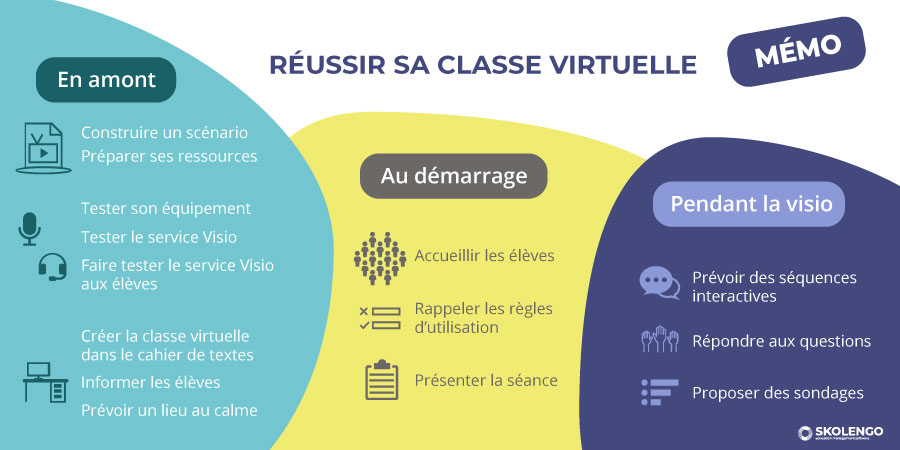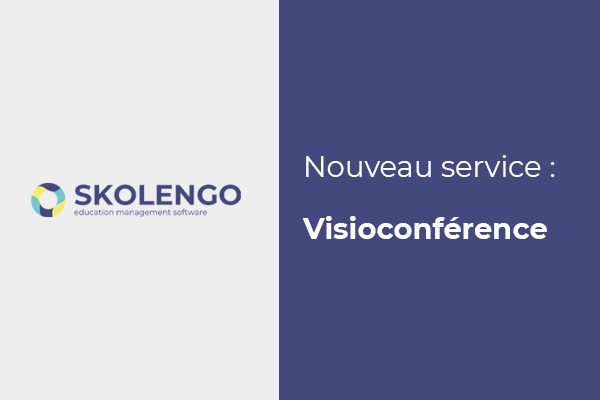3 key steps to a successful virtual class
The Virtual class gives teachers the opportunity to teach all students from a distance (students on internships, hospitalized students, top athletes, school closures, etc.). It can also be used to vary teaching methods (oral training, cultural exchanges with other Schools...). Here are some tips and best practices for running your first virtual class.
Preparing your virtual class
In addition to the equipment required (computer, Tablet or smartphone with microphone, webcam and Internet connection), it's essential to be well prepared before the virtual class so that you can concentrate solely on your teaching objectives during the virtual class.
- Build a scenario adapted to learners using one or more of the User's Videoconference features to prepare for the virtual class.
- Test the Virtual class service, webcam and microphone as well as the webcam and microphone.
- Prepare all documents to be shared or uploaded by Students. If documents are to be uploaded, students can download them before the Virtual class via the Shared folders for example, or directly during the Virtual class.
- Have the students test the Virtual class service beforehand and ask them to test their microphones before the start of the videoconference by creating a test virtual class in the Organiser.
Start the Virtual class
Getting the Virtual class up and running is an important part of capturing your students' attention. Here are a few tips to get you started.
- Welcoming all Students
- Remind students of the rules of use (microphone, raising hands, Chat, shared Grades, etc.)
- Introduce session objectives and of the Lesson
Running a virtual class
The key to a successful Virtual class is to keep the students' attention throughout the Lesson.- Plan interactive times using chat or shared Grades, for example, which you can save at the end of the Virtual class.
- Respond to questions from students when they ask to speak via the "raise your hand" feature
- Propose polls during the Virtual class to check understanding of a notion
Skolengo's integrated Visio service makes it possible to organize a secure secure virtual class. Only people with a Skolengo ENT account can access the virtual class, thus avoiding the participation of external interferers. The service is hosted in France and complies with the RGPD, guaranteeing the protection of users' personal data.
To find out more :
- Consult theonline help dedicated to Videoconferencing at Skolengo Academy for Skolengo users only.
- Bonus: a memo of best practices for a successful virtual class.



